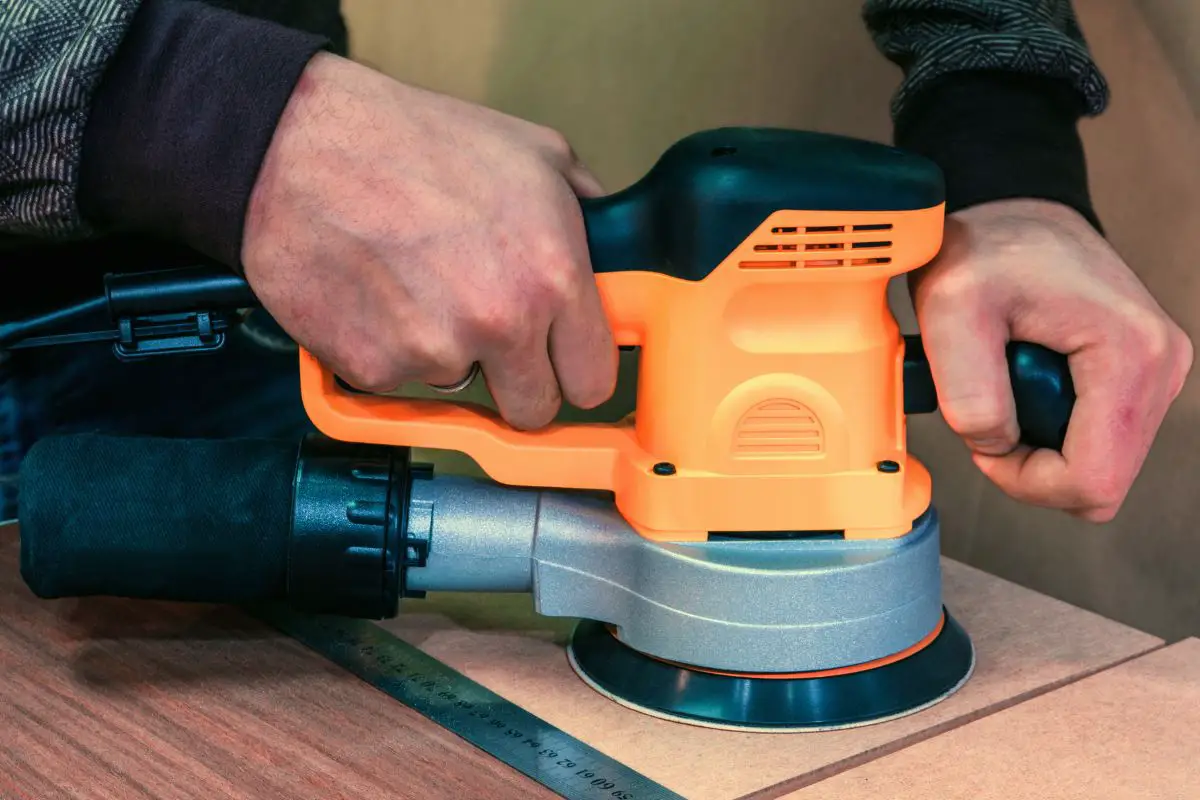If you are just getting into the world of power tools, DIY, and understanding them, then you may get stuck every now and again about which tool is ideal for which purpose.
We are here to help you so that you can get back to your job as quickly as possible – to keep your wife happy as you continue fixing things around the house.
Two tools that often cause a bit of division among beginners on which to use is the sander and the angle grinder, commonly known just as a grinder. They both have different purposes, for different materials, and at different times.
We are going to talk about what these two different tools are and which are best for different purposes, as well as their differences, so you can get back to your project as soon as possible.
What Is A Sander?
A sander can manifest itself in the world of tools in a few different ways. In a basic sense, the sander is an automatic version of sandpaper.
Sandpaper is when sand is adhered to a piece of thick paper allowing a user to apply pressure to material, almost always wood, in order to abrasively remove a layer of material.
A sander can be a static band sander where you direct the material onto the static sander, or you can have a handheld power sander where you can invert this and direct teh sander onto the material.
A sander often has a singular purpose to sand wood down either to remove a layer of wod=od material or to make the wood smooth.
What Is An Angle Grinder?
An angle grinder can actually have quite a few different uses depending on what material you are using it on. An angle grinder has multiple discs that can be applied to the actual unit, allowing different uses on different materials.
An angle grinder can fulfill the purpose of a sander with the sanding attachment disc which operates slightly differently to a sander but fulfills the same function. With a different disc an angle grinder can cut through wood too, with precision.
With the appropriate attachments for each material, you can use an angle grinder to cut through and sand down any material from metal, wood, and even masonry.
What Are The Main Differences?
The sander and athe angle grinder are two very separate tools, so there are a few key differences worth pointing out between the two power tools.
Orbital Rotation Vs. Band Rotation

Each tool relies on different types of abrasive movement to remove material. Often an electric sander, but especially static standing sander, will often rely on a band of sandpaper that is rotated at a certain speed in order to create abrasion.
On the other hand, an angle grinder will rely on orbital rotation moving at a certain RPM in order to remove material as well as cut through things.
You can buy sanders that use orbital rotation for abrasion, but this is where the angle grinder can come into its own.
If you are going to buy a sander that has orbital rotation you may as well get an angle grinder as they can fulfill this function as well as much more.
Usage Of The Tool
One huge difference between the sander and the angle grinder is their purpose. While a sander has the specific purpose of sanding down wood, an angle grinder can have multiple uses.
Namely, an angle grinder can cut through things as well as sand things down, fulfilling the function of more than one tool.
In this sense it means that if you want a snader you could easily buy an angle grinder for this purpose and not have to buy a cutting tool additionally.
Materials Tool Can Be Used On
Moreover, it is worth noting that a sander is almost singularly used for sanding down wood, regardless of whether it is static or hand held, it doesn’t really work on other materials in the same way.
However, the good thing about an angle grinder is that you can swap the discs out for not only multiple purposes of cutting and sanding but also for different materials such as metal, wood, and even stone.
Safety
It stands to reason that a sander is safer than an angle grinder, although caution should be erred when using both tools.
However, an angle grinder can be really dangerous, it can be strong enough to cut through metal and stone. Even more so, safety equipment should be used with both regardless of the tool.
Yet, with an angle grinder you should consider gloves as well as a mask in order to keep yourself from sparks that could easily damage your skin.
The RPM is also a big safety concern with an angle grinder as it can lurch when the RPM isn’t changed alongside the disc, this could send the angle grinder lurching forward, or even the material itself.
Final Thoughts
As you can see, there are quite a few major differences between a sander and a grinder. A sander is much more of a single purpose tool, used for sanding down wood specifically.
Although there are different types of sander you can use such as a standing static sander or a hand held sander, or even manual sandpaper.
An angle grinder on the other hand endeavors to be more than a single purpose tool, but a multi tool. This is why angle grinders are so popular as they can fulfill the function of many tools within one unit and purchase.
With this said, if you are looking to sand something down then an angle grinder can certainly do this but also allows you many other uses of it. If you buy a snader, then you will almost only use it for sanding wood.
If you want a tool fit for a specific purpose thena sander is worth considering, if you want a tool that can do more than one thing, consider the angle grinder.
